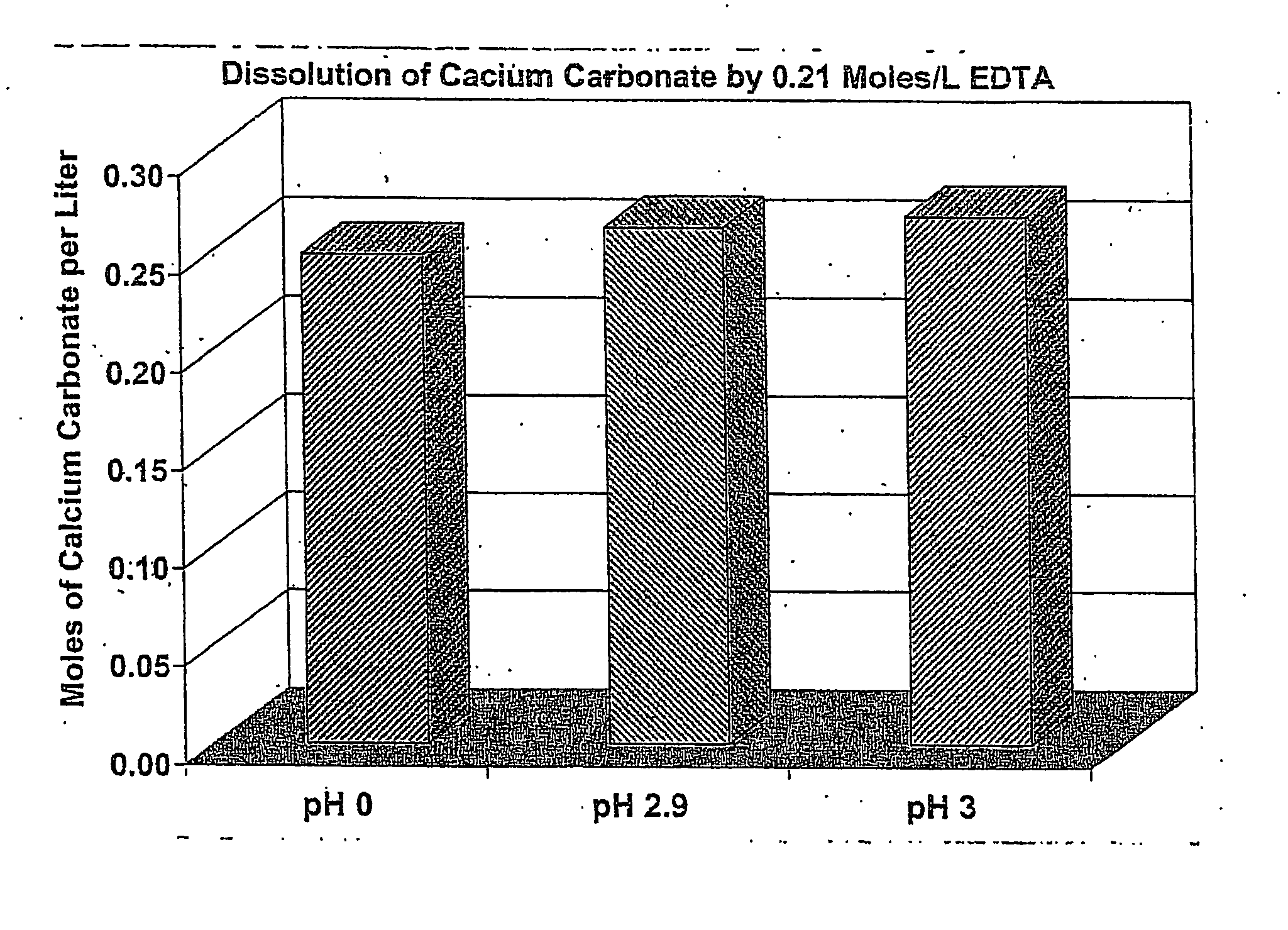Method using particulate chelates to stimulate production of petroleum in carbonate formations
a technology of carbonate formation and chelate, which is applied in the direction of other chemical processes, sealing/packing, and well accessories, etc., can solve the problems of low stability of chelants in acidic solution, and achieve low stability, enhanced hydrocarbon production, and high dissolution capability
- Summary
- Abstract
- Description
- Claims
- Application Information
AI Technical Summary
Benefits of technology
Problems solved by technology
Method used
Image
Examples
example 1
[0021] The following demonstrates the ability of particulate EDTA to dissolve calcium carbonate (limestone). In this example, 23.76 g of tetrasodium EDTA tetrahydrate was added to 200 ml of distilled water at room temperature. Thirty-six (36) wt % HCl was then added while stirring vigorously until the EDTA precipitated at pH 0, pH 2.9 and pH 3.0, respectively.
[0022] Distilled water and HCl were then added until the volume was 250 ml to yield 0.21 moles of EDTA per liter and the test pH.
[0023] The fluids were then heated to a temperature of 150° F. with the pH at this point being approximately 2.7.
[0024] Then 6.26 g of powdered calcium carbonate was added to the EDTA system while stirring. The pH increased to about 4.5 to 5 following the addition of the calcium carbonate. Stirring was maintained for a period of four hours. Subsequently, the solution was filtered and the solids were dried in an oven. It should be noted that when the EDTA systems at pH 0 and pH 2.9 were inspected, t...
example 2
[0027] The following demonstrates the ability of particulate EDTA to dissolve calcium carbonate (limestone). A 0.21 M EDTA slurry was prepared in accordance with Example 1 at room temperature to produce a pH of 2.9, by adding 36 wt % HCl to a solution of EDTA at a pH of 12. The EDTA slurry at pH 2.9 had a cloudy, opaque appearance. The slurry was then heated to a temperature of 150° F. while stirring was maintained. The pH at this point was approximately 2.5.
[0028] Thereafter, a limestone field core was suspended in the slurry, and stirring was maintained for a period of four (4) hours. The solution was then filtered and the core was dried in an oven.
[0029] The particulate EDTA slurry was heated to 150° F. to simulate injection into a well. The appearance of the solution was examined at T=0 hours, T=1 hour, and T=2 hours. The appearance of the solution at T=0 hours while still somewhat opaque was less so than the appearance at room temperature and pH 2.9 described above. At T=1 ho...
PUM
| Property | Measurement | Unit |
|---|---|---|
| pressure | aaaaa | aaaaa |
| temperature | aaaaa | aaaaa |
| pH | aaaaa | aaaaa |
Abstract
Description
Claims
Application Information
 Login to View More
Login to View More - R&D
- Intellectual Property
- Life Sciences
- Materials
- Tech Scout
- Unparalleled Data Quality
- Higher Quality Content
- 60% Fewer Hallucinations
Browse by: Latest US Patents, China's latest patents, Technical Efficacy Thesaurus, Application Domain, Technology Topic, Popular Technical Reports.
© 2025 PatSnap. All rights reserved.Legal|Privacy policy|Modern Slavery Act Transparency Statement|Sitemap|About US| Contact US: help@patsnap.com

